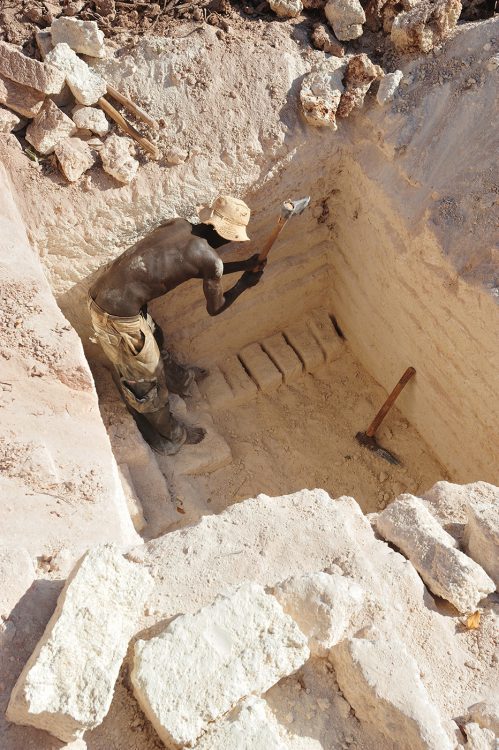


Living corals are incredible and patient underwater builders. Over the centuries, the coral reefs have become real barriers that even become islands. Their engineering genius continues even after their death. Throughout the Indian Ocean, coral is still the main building material available.
Compact and light, easily accessible, coral is the cornerstone of all the palaces of Zanzibar and Lamu but also of the more humble houses of fishermen on the East coast of Africa. Coral deposits are found almost everywhere on the coasts. But not all are good at exploiting. The most recent ones are often too soft and all corals are not equal, present considerable differences from the point of view of hardness, consistency and resistance. To find the oldest possible, workers remove the top layer mixed with the earth and dig a meter or two to reach the right density.
In Kenya, on the island of Manda, located opposite Lamu, these quarries can be visited. The tailors’ work is exhausting. Each digs their own hole and cuts rectangular blocks with a peak, all under the sun and without water. Once cut, these blocks are set to harden in the sun, collected and then carried on the back of a man or a donkey to the beach where they will be loaded into dhows going to the main harbours of the coast (Lamu, Mombasa, Zanzibar…) .
Coral can be used in several forms. Most often, it is cut in rubble about 30 cm wide by 20 cm high to mount the walls. The ultimate, used by many hotels, is to use small pieces of coral with the traces of animals to perfect the interior or exterior decoration. When the owner is less wealthy, the coral is used in a coarse block mixed with earth and poured between posts of mangrove wood intertwined. Finally, coral is also used in the form of lime. Mortars made of coral lime, calcined red clay and sand acquire considerable resistance over time.